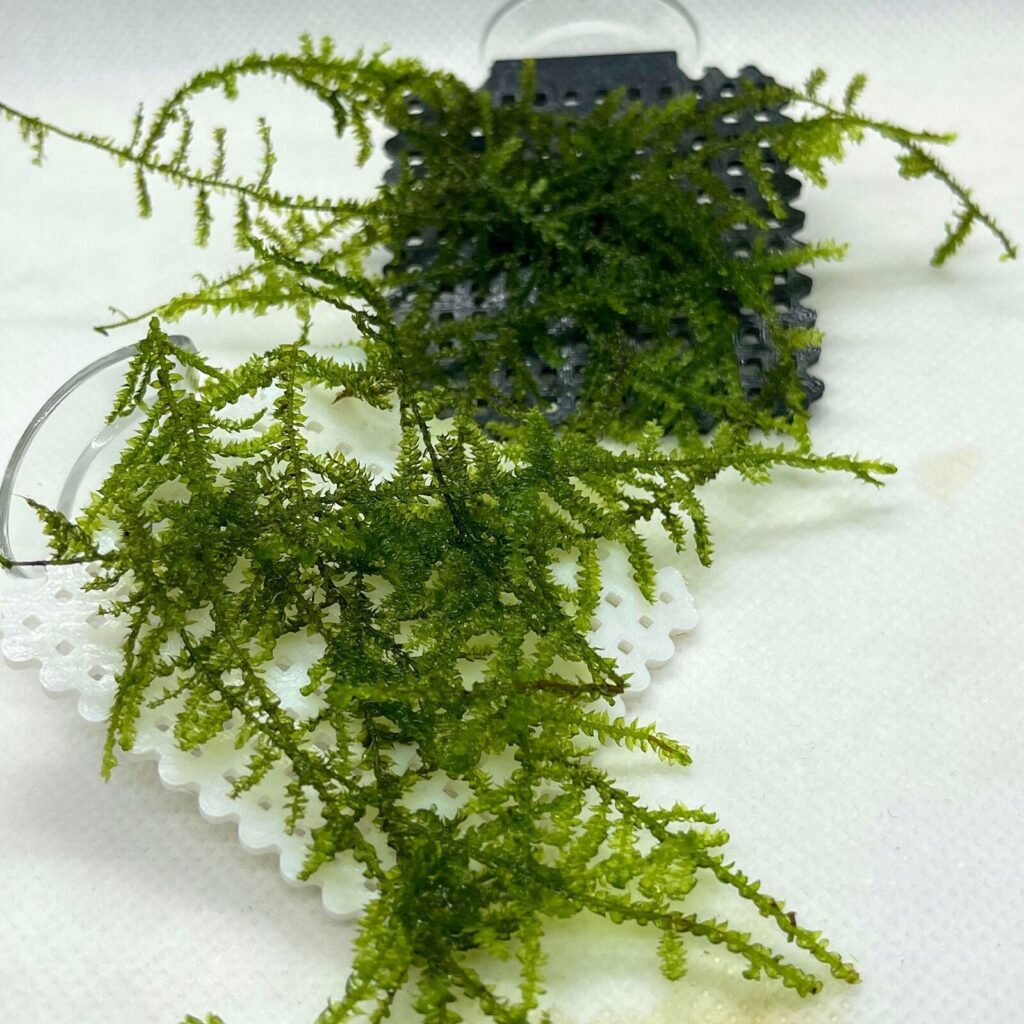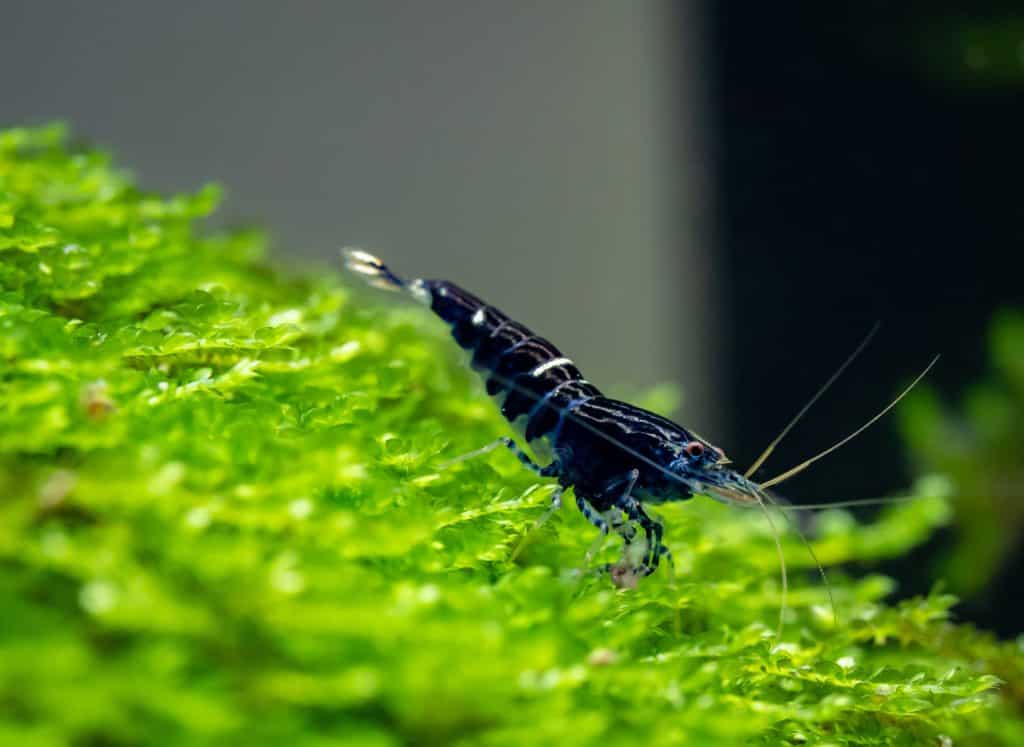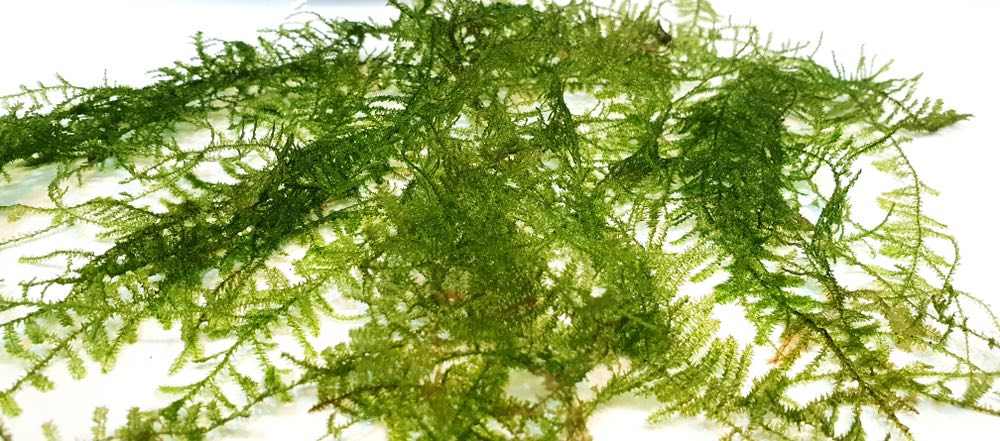Christmas Moss (Vesicularia montagnei) is a popular aquatic plant in the aquarium hobby due to its unique growth pattern and aesthetic appeal. It is a slow-growing plant that can add a touch of greenery and depth to any aquarium setup, and its dense growth can provide shelter and hiding spots for fish and other aquatic creatures. This article will explore the key features of Christmas Moss, its care requirements, and some creative ways to incorporate it into your aquarium design.
Description
Christmas Moss is a type of aquatic moss that originates from Southeast Asia. It is a small, creeping plant that grows in dense, bushy clumps. The plant’s stems are thin and branching, with leaves that are about 1-2 mm long and 0.5-1 mm wide. The leaves are triangular in shape and have pointed tips. Christmas Moss gets its name from its growth pattern, which is reminiscent of a Christmas tree. The plant grows slowly and can take several months to form a dense clump.
Care Requirements
Christmas Moss is a hardy plant that is relatively easy to care for. It can grow in a wide range of water conditions, including soft or hard water, acidic or alkaline water, and low or high light conditions. However, for optimal growth and health, there are several key factors to keep in mind.
Lighting:
Christmas Moss can grow in low light conditions, but it will grow best under moderate to high light conditions. If you have a planted aquarium, make sure to provide adequate lighting for the plant to thrive.
Water Parameters:
Christmas Moss can tolerate a wide range of water parameters, but it prefers slightly acidic to neutral water with a pH of 6.0-7.5. The water should also be moderately hard, with a GH (general hardness) of 4-8 dGH.
CO2 and Nutrients:
Christmas Moss does not require CO2 injection, but it will benefit from supplemental carbon dioxide if you want to promote faster growth. The plant also needs a source of nutrients, which can be provided through fertilizers or fish waste.
Propagation
Christmas Moss can be propagated through division or fragmentation. To divide the plant, simply separate a clump of moss from the parent plant and plant it in a new location. To fragment the plant, cut off a small piece of the moss and attach it to a rock, driftwood, or other substrate using fishing line or glue. Over time, the moss will attach itself to the substrate and begin to grow.
Creative Uses
Christmas Moss is a versatile plant that can be used in many creative ways to enhance your aquarium design. Here are some ideas to get you started:
Aquascape: Christmas Moss can be used to create a natural-looking aquascape by attaching it to rocks, driftwood, or other structures. The plant’s unique growth pattern can add depth and dimension to your aquarium.
Carpeting: Christmas Moss can also be used as a carpeting plant by attaching it to the substrate and allowing it to grow horizontally. This can create a lush, green carpet that can be a beautiful contrast to other plants in your aquarium.
Tree: As mentioned earlier, Christmas Moss gets its name from its growth pattern, which can resemble a miniature Christmas tree. You can take advantage of this unique feature by attaching the moss to a piece of driftwood and shaping it into a tree shape.
Conclusion
Christmas Moss is a popular aquatic plant that can add beauty and depth to any aquarium setup. It is a hardy plant that is relatively easy to care for, and it can be propagated through division or fragmentation. With its unique growth pattern and versatility, Christmas Moss is a great addition to any aquascape. Whether you use it to create a natural-looking aquascape, a lush carpet, or a miniature Christmas tree, this plant is sure to enhance the visual appeal of your aquarium.









![]()
